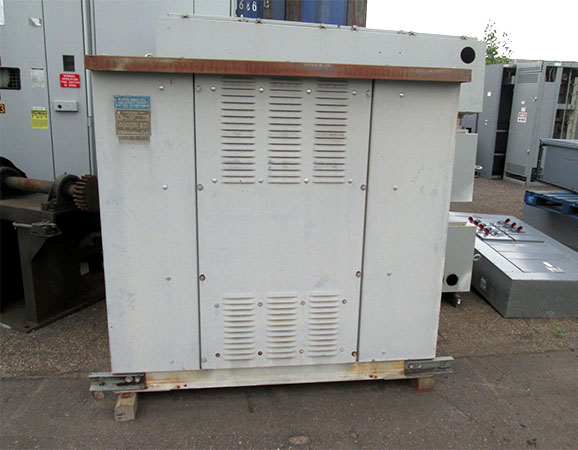How to Do Professional Electrical Installation of a 480V, 400V, 240V, 208V, 120V Dry Type Transformer Outside in Tustin, Fullerton, Brea, Orange, Placentia, Yorba Linda, Anaheim
Installing an outside dry type transformer for various voltages such as 480V, 400V, 240V, 208V, and 120V requires precision, technical knowledge, and adherence to safety standards. This guide will walk you through the essential steps for a professional transformer installation, ensuring efficient and safe operation in Tustin, Fullerton, Brea, Orange, Placentia, Yorba Linda, and Anaheim.
Equipment and Tools Needed:
- Voltage tester
- Wire strippers
- Conduit bender
- Screwdrivers
- Pliers
- Electrical tape
- Circuit breakers
- Disconnect switch
- Proper gauge wire
- Grounding equipment
- Electrical panel
- 480V, 400V, 240V, 208V, 120V Dry Type Transformer
Step-by-Step Installation Guide:
- Planning and Permits:
- Before starting any electrical installation, ensure you have the necessary permits from your local authority in Tustin. This is crucial to avoid legal issues and to ensure that the installation complies with local electrical codes.
- Plan the layout of your transformer wiring, considering the location and power requirements. Create a detailed schematic that includes all connections, circuit breakers, disconnect switches, and electrical panels.
- Safety Precautions:
- Turn off the main power supply using the main disconnect switch to prevent any accidental electrocution. Safety should always be your top priority.
- Use a voltage tester to confirm that the power is off before beginning any work in Fullerton. Always double-check to avoid any risk.
- Choosing the Right Wires and Conduits:
- For installations involving 480V, 400V, 240V, 208V, and 120V dry type transformers in Brea, select wires that can handle the required voltage and current. Use wires with appropriate insulation ratings to prevent overheating and electrical fires.
- Install conduits to protect the wires from physical damage and to comply with local electrical codes. Conduits also help organize and route wires neatly.
- Installing the Transformer:
- Secure the transformer in a well-ventilated area to prevent overheating. Ensure it is mounted on a stable surface to minimize vibration and noise.
- The transformer should be installed outside, on a concrete pad or a sturdy platform to keep it elevated and protected from the elements.
- Follow the manufacturer's guidelines for mounting and securing the transformer.
- Connecting the Primary Side:
- Strip the insulation from the primary side wires.
- Connect the primary wires to the transformer's primary input terminals. Ensure that the connections are tight and secure to prevent any loose connections that could cause arcing or overheating.
- Use the appropriate circuit breaker in the electrical panel to protect the primary side wiring.
- Connecting the Secondary Side:
- Strip the insulation from the secondary side wires.
- Connect the secondary wires to the transformer's secondary output terminals. Follow the wiring diagram provided with the transformer to ensure correct connections.
- Use electrical tape to insulate exposed conductors and secure connections.
- Install a disconnect switch for the secondary side to allow for safe maintenance and shutdown.
- Grounding:
- Proper grounding is essential for safety in Orange. Connect the ground wire from the transformer to the ground terminal and ensure it is properly bonded to the grounding system.
- Check the grounding connections at the electrical panel to ensure they meet local codes and safety standards.
- Weatherproofing:
- Since the transformer is installed outside, ensure it is properly weatherproofed. Use weatherproof enclosures or covers to protect it from rain, dust, and other environmental factors.
- Inspect the installation site regularly to ensure there is no water pooling or debris accumulation around the transformer.
- Testing and Inspection:
- Once all connections are made, turn on the power and use a voltage tester to ensure that the correct voltage is present at the transformer terminals in Placentia. Accurate testing confirms that the installation is correct and safe.
- Conduct a thorough inspection to ensure that all connections are secure and there are no signs of overheating or electrical arcing. Regular inspections help identify and rectify potential issues early.
- Final Adjustments:
- If everything is functioning correctly, secure all covers and panels. Properly closing panels prevents accidental contact with live wires in Yorba Linda.
- Label the circuit breakers, disconnect switches, and transformer to indicate the equipment they are connected to for future reference. Clear labeling helps in quick identification during maintenance or emergencies.
Common Issues and Troubleshooting:
- Overheating: Ensure the transformer is installed in a well-ventilated area. Check for any loose connections or overloaded circuits.
- Voltage Fluctuations: Verify that the connections are tight and that the correct gauge wires are used. Inconsistent voltage can damage connected equipment.
- Humming Noise: Ensure the transformer is mounted securely and check for any loose parts that might vibrate.
By following these steps, you can ensure a professional and safe installation of a 480V, 400V, 240V, 208V, 120V dry type transformer outside. This guide is tailored to meet the specific needs and regulations in Tustin, Fullerton, Brea, Orange, Placentia, Yorba Linda, and Anaheim. Key terms like "electrical installation," "transformer wiring," "dry type transformer," "480V transformer," "400V transformer," "240V transformer," "208V transformer," "120V transformer," "electrical safety," "grounding equipment," "circuit breakers," "disconnect switch," and "electrical panel" are crucial for optimizing this content for search engines, making it easier for customers to find reliable information on professional electrical services.
For more information, contact CZ Electric, visit CZ Electric, or call 714-264-3206.
Take a look at our other 480V 400V 240V 208V Transformer installation how-to guides and the full list of our Orange County commercial and industrial electrical services





